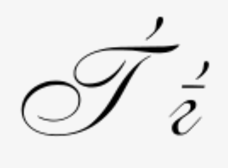…it means those languages’ .locl glyphs won’t work. Stylistic sets seem to be a solution. I think manual (or a blog post) should mention that.
This matters because SRB/MKD has 4 Cyrillic letters that are stylistically different when upright and additional 5 in italics.
I have been planning a blogpost on Serbian Cyrillic for a while. Can you point me to a good resource on this or send me your own samples? mekka at my username dot com
Alexei Vanyashin has a couple posts on Serbian Cyrillic:
http://learncyrillic.tumblr.com/tagged/Serbian
I believe I used some other sources, but I don’t seem to have them handy.
Thanks!
The only difference between SRB and MKD seems that MKD italic /sha doesn’t have a bar.
@Eames
Moreover the optional bottom bar in Serbian /sha is becoming a rudimentary feature. Can be found in a few old-style serif fonts, but is rare in local-manufactured fonts, especially grotesques. Fonts made outside Serbia keep including it in fear or appearing ignorant without realising the local preference has changed.
Macedonian uses ѓ, which requires a locl variant. Serbian alphabet doesn’t. This can be solved via mark positioning, if ge-cy.loclSRB has a proper top accent. For the sake of proper semantics I would make a separate MKD glyph for it:
script cyrl;
language SRB;
language MKD;
sub be-cy by be-cy.loclSRB;
sub ge-cy by ge-cy.loclSRB;
sub de-cy by de-cy.loclSRB;
sub pe-cy by pe-cy.loclSRB;
sub te-cy by te-cy.loclSRB;
language MKD;
sub gje-cy by gje-cy.loclMKD;

Sample from Cormorant Italic by Christian Thalmann, Catharsis Fonts.
Serbian can work in Indesign via custom inx files:
http://blog.typekit.com/2011/11/04/how-to-enable-more-languages-in-indesign-cs5-5/
